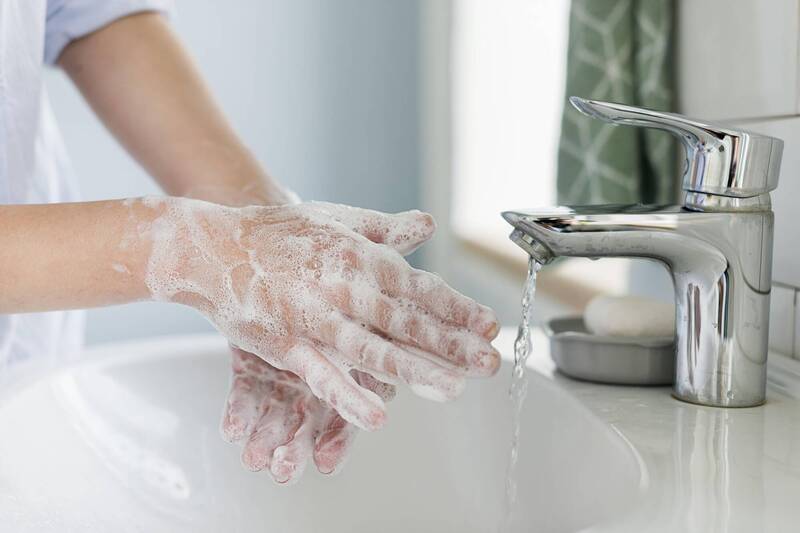Studies have shown that if you can wash your hands 6-10 times a day, you can greatly reduce the chance of contracting Wuhan pneumonia; the picture shows the situation.
(picture taken from freepik)
[Health Channel/Comprehensive Report] With the impact of the epidemic, frequent hand washing is an important step in epidemic prevention!
According to the latest British research, if you can wash your hands 6-10 times a day, you can greatly reduce the chance of contracting Wuhan pneumonia (new coronavirus disease, COVID-19)!
In addition, the number of people eating out is increasing, and catering hygiene has become the most concerned issue for people eating out. Not only catering workers should develop a good habit of washing hands before work, consumers should also choose hygienic and safe dining places, and correct before eating. handwashing.
The best way to get rid of germs and viruses is to wash your hands
According to the Food and Drug Administration, hands are the most frequent part of direct contact with food. If you wash your hands incorrectly, bacteria or viruses on your body will spread to the food being prepared or eaten, and food poisoning incidents may occur.
Washing hands is the most effective way to remove pathogenic bacteria and viruses. Through the surfactant in soap or hand sanitizer, it can promote the emulsification of oil in water and dirt, and then rub it with your hands to remove skin dirt and microorganisms.
Please read on...
Hand washing steps for food handlers.
(The picture is taken from Food and Drug Safety Weekly)
6 steps for food workers to wash their hands
The Food and Drug Administration reminds that for food workers, the Good Food Hygienic Practice (GHP) guidelines stipulate that food workers should wash their hands in the following situations: spitting at work, blowing their noses or other behaviors that may contaminate their hands, such as handling food Before and after, after going to the toilet, after handling chemical-related agents (such as disinfectant, etc.), after touching trash cans, wiping, cleaning tables or washing dirty dishes, changing soiled clothes, touching money, rags, equipment or After operating the surface of the table and other actions that may contaminate food, to ensure food hygiene and safety.
Food workers must follow the "6 steps of hand washing", including: wet, wash, brush, rub, rinse, and dry. The third step is to carefully clean fingertips and nails with a nail brush.
5 steps for general public to wash their hands
The Food and Drug Administration emphasizes that for the general public, in addition to washing their hands before eating, they should also wash their hands after going to the toilet, blowing their nose, coughing or sneezing to avoid the spread of bacteria or viruses.
The "5 steps" of washing hands for ordinary people include: wet, rub, rinse, hold, and rub.
Reprinted from Issue 909 of the Food and Drug Safety Weekly Report of the Food and Drug Administration of the Ministry of Health and Welfare
Normal people wash their hands properly.
(The picture is taken from Food and Drug Safety Weekly)
☆Health news will never be missed, click like to follow the fan page.
☆For more important medical news, please go to Liberty Health.com.
keywords
handwashing
Wash your hands frequently
wash your hands properly
soap to wash hands
related news
